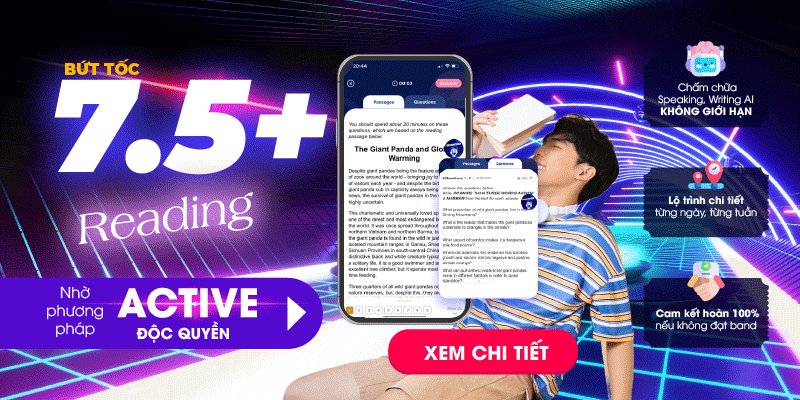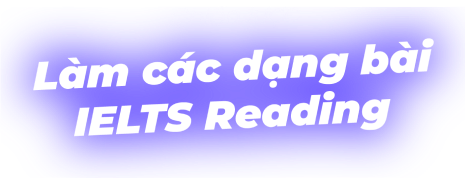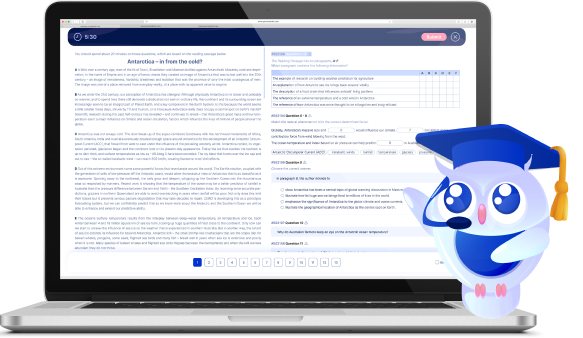Changes in reading habits là bài đọc xuất hiện trong Đề Cam 16, Test 4, Reading Passage 2. Tại bài viết dưới đây, hãy cùng Edmicro xem qua đáp án cũng như giải thích đáp án cho từng câu:
Đề bài
Changes in reading habits
What are the implications of the way we read today?
Look around on your next plane trip. The iPad is the new pacifier for babies and toddlers. Younger school-aged children read stories on smartphones; older kids don’t read at all, but hunch over video games. Parents and other passengers read on tablets or skim a flotilla of email and news feeds. Unbeknown to most of us, an invisible, game-changing transformation links everyone in this picture: the neuronal circuit that underlies the brain’s ability to read is subtly, rapidly changing and this has implications for everyone from the pre-reading toddler to the expert adult.
As work in neurosciences indicates, the acquisition of literacy necessitated a new circuit in our species’ brain more than 6,000 years ago. That circuit evolved from a very simple mechanism for decoding basic information, like the number of goats in one’s herd, to the present, highly elaborated reading brain. My research depicts how the present reading brain enables the development of some of our most important intellectual and affective processes: internalized knowledge, analogical reasoning, and inference; perspective-taking and empathy; critical analysis and the generation of insight. Research surfacing in many parts of the world now cautions that each of these essential ‘deep reading’ processes may be under threat as we move into digital- based modes of reading.
This is not a simple, binary issue of print versus digital reading and technological innovation. As MIT scholar Sherry Turkle has written, we do not err as a society when we innovate but when we ignore what we disrupt or diminish while innovating. In this hinge moment between print and digital cultures, society needs to confront what is diminishing in the expert reading circuit, what our children and older students are not developing, and what we can do about it.
We know from research that the reading circuit is not given to human beings through a genetic blueprint like vision or language; it needs an environment to develop. Further, it will adapt to that environment’s requirements – from different writing systems to the characteristics of whatever medium is used. If the dominant medium advantages processes that are fast, multi-task oriented and well-suited for large volumes of information, like the current digital medium, so will the reading circuit. As UCLA psychologist Patricia Greenfield writes, the result is that less attention and time will be allocated to slower, time-demanding deep reading processes.
Increasing reports from educators and from researchers in psychology and the humanities bear this out. English literature scholar and teacher Mark Edmundson describes how many college students actively avoid the classic literature of the 19th and 20th centuries in favour of something simpler as they no longer have the patience to read longer, denser, more difficult texts. We should be less concerned with students’ ‘cognitive impatience’, however, than by what may underlie it: the potential inability of large numbers of students to read with a level of critical analysis sufficient to comprehend the complexity of thought and argument found in more demanding texts.
Multiple studies show that digital screen use may be causing a variety of troubling downstream effects on reading comprehension in older high school and college students. In Stavanger, Norway, psychologist Anne Mangen and her colleagues studied how high school students comprehend the same material in different mediums. Mangen’s group asked subjects questions about a short story whose plot had universal student appeal; half of the students read the story on a tablet, the other half in paperback. Results indicated that students who read on print were superior in their comprehension to screen-reading peers, particularly in their ability to sequence detail and reconstruct the plot in chronological order.
Ziming Liu from San Jose State University has conducted a series of studies which indicate that the ‘new norm’ in reading is skimming, involving word-spotting and browsing through the text. Many readers now use a pattern when reading in which they sample the first line and then word- spot through the rest of the text. When the reading brain skims like this, it reduces time allocated to deep reading processes. In other words, we don’t have time to grasp complexity, to understand another’s feelings, to perceive beauty, and to create thoughts of the reader’s own.
The possibility that critical analysis, empathy and other deep reading processes could become the unintended ‘collateral damage’ of our digital culture is not a straightforward binary issue about print versus digital reading. It is about how we all have begun to read on various mediums and how that changes not only what we read, but also the purposes for which we read. Nor is it only about the young. The subtle atrophy of critical analysis and empathy affects us all equally. It affects our ability to navigate a constant bombardment of information. It incentivizes a retreat to the most familiar stores of unchecked information, which require and receive no analysis, leaving us susceptible to false information and irrational ideas.
There’s an old rule in neuroscience that does not alter with age: use it or lose it. It is a very hopeful principle when applied to critical thought in the reading brain because it implies choice. The story of the changing reading brain is hardly finished. We possess both the science and the technology to identify and redress the changes in how we read before they become entrenched. If we work to understand exactly what we will lose, alongside the extraordinary new capacities that the digital world has brought us, there is as much reason for excitement as caution.
Questions 14-17
Choose the correct letter, A, B, C or D.
Write the correct letter in boxes 14-17 on your answer sheet.
14. What is the writer’s main point in the first paragraph?
A – Our use of technology is having a hidden effect on us.
B – Technology can be used to help youngsters to read.
C – Travellers should be encouraged to use technology on planes.
D – Playing games is a more popular use of technology than reading.
15. What main point does Sherry Turkle make about innovation?
A – Technological innovation has led to a reduction in print reading.
B – We should pay attention to what might be lost when innovation occurs.
C – We should encourage more young people to become involved in innovation.
D – There is a difference between developing products and developing ideas.
16. What point is the writer making in the fourth paragraph?
A – Humans have an inborn ability to read and write.
B – Reading can be done using many different mediums.
C – Writing systems make unexpected demands on the brain.
D – Some brain circuits adjust to whatever is required of them.
17. According to Mark Edmundson, the attitude of college students
A – has changed the way he teaches.
B – has influenced what they select to read.
C – does not worry him as much as it does others.
D – does not match the views of the general public.
Questions 18-22
Complete the summary using the list of words, A-H, below.
Write the correct letter, A-H, in boxes 18-22 on your answer sheet.
Studies on digital screen use
There have been many studies on digital screen use, showing some 18………… trends. Psychologist Anne Mangen gave high-school students a short story to read, half using digital and half using print mediums. Her team then used a question-and-answer each technique to find out how 19…………….. group’s understanding of the plot was. The findings showed a clear pattern in the responses, with those who read screens finding the order of information 20………….. to recall.
Studies by Ziming Liu show that students are tending to read 21………………
words and phrases in a text to save time. This approach, she says, gives the reader a superficial understanding of the 22…………. content of material, leaving no time for thought.
| A. fast | B. isolated | C. emotional | D. worrying |
| E. Many | F. hard | G. combined | H. though |
Questions 23-26
Do the following statements agree with the views of the writer in Reading Passage 2?
In boxes 23-26 on your answer sheet, write
| YES | if the statement agrees with the views of the writer |
| NO | if the statement contradicts the views of the writer |
| NOT GIVEN | if it is impossible to say what the writer thinks about this |
23. The medium we use to read can affect our choice of reading content.
24. Some age groups are more likely to lose their complex reading skills than others.
25. False information has become more widespread in today’s digital era.
26. We still have opportunities to rectify the problems that technology is presenting.
Đáp án đề Changes in reading habits
Dưới đây là đáp án cho đề đọc Changes in reading habits để các bạn so sánh với đáp án của mình:
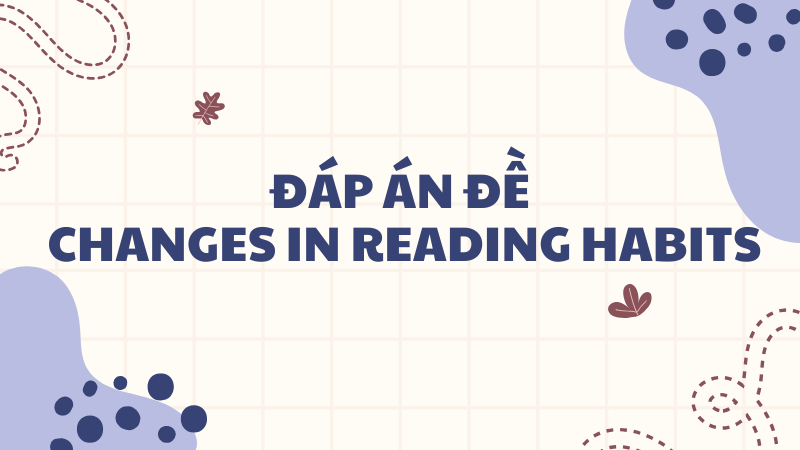
| Câu hỏi | Đáp án |
|---|---|
| 14 | A |
| 15 | B |
| 16 | D |
| 17 | B |
| 18 | D |
| 19 | H |
| 20 | F |
| 21 | B |
| 22 | characteristics |
| 23 | YES |
| 24 | NO |
| 25 | NOT GIVEN |
| 26 | YES |
Xem thêm: Saving Bugs To Find New Drugs: Hướng Dẫn Giải Chi Tiết
Giải thích đáp án chi tiết đề Changes in reading habits
Cùng xem lời giải chi tiết cho đề bài Changes in reading habits:
Questions 14 – 17
Question 14
Đáp án: A
Dạng câu hỏi: Multiple-choice questions
Vị trí đáp án: Paragraph 1
Giải thích: Đoạn văn đầu tiên đề cập rằng tác giả đưa ra một số ví dụ hấp dẫn về cách chúng ta sử dụng công nghệ trong cuộc sống hàng ngày. Sau đó, ở dòng 4-5, văn bản nêu rằng: “Unbeknown to most of us, an invisible, game-changing transformation connects everyone in this picture…” Trong ngữ cảnh này: “Unbeknown to most of us, an invisible, game-changing transformation” ám chỉ một hiệu ứng ẩn. Do đó, câu trả lời là A: Việc chúng ta sử dụng công nghệ đang có một hiệu ứng ẩn đối với chúng ta.
Question 15
Đáp án: B
Dạng câu hỏi: Multiple-choice questions
Vị trí đáp án: Paragraph 3
Giải thích: Đoạn 3 có nhắc đến Sherry Turkle. Cụ thể, ở dòng 3-5 có ghi: “…In this hinge moment between print and digital cultures, society needs to confront what is diminishing in the expert reading circuit, what our children and older students are not developing, and what we can do about it.” Những dòng cuối cùng ở đây ngụ ý rằng chúng ta nên chú ý đến những gì có thể bị mất hoặc giảm đi khi quá trình đổi mới diễn ra. Do đó, câu trả lời là B: Chúng ta nên chú ý đến những gì có thể bị mất khi quá trình đổi mới diễn ra.
Question 16
Đáp án: D
Dạng câu hỏi: Multiple-choice questions
Vị trí đáp án: Paragraph 4
Giải thích:Câu trả lời nằm ở những dòng mở đầu của đoạn 4, trong đó tác giả nêu: “We know from research that the reading circuit is not given to human beings through a genetic blueprint like vision or language; it needs an environment to develop. Further, it will adapt to that environment’s requirements – …” Trong đoạn trích này, “the reading circuit” đề cập đến một số mạch não và “nó sẽ thích ứng với các yêu cầu của môi trường đó” có nghĩa là các mạch này điều chỉnh theo bất kỳ yêu cầu nào đối với chúng. Do đó, câu trả lời là D: Some brain circuits adjust to whatever is required of them.
Question 17
Đáp án: B
Dạng câu hỏi: Multiple choice questions
Vị trí đáp án: Paragraph 5
Giải thích: âu trả lời nằm ở đoạn 5. Cụ thể, dòng 2-4 nêu: “…English literature scholar and teacher Mark Edmundson describes how many college students actively avoid the classic literature of the 19th and 20th centuries in favor of something simpler as they no longer have the patience to read longer, denser, more difficult texts…” Trong đoạn trích này: “college students actively avoid classic literature” ngụ ý rằng thái độ của sinh viên đại học đã ảnh hưởng đến các tài liệu đọc mà họ lựa chọn. Do đó, câu trả lời là B: The attitude of college students has influenced what they select to read.
Xem thêm: The White Horse Of Uffington | Đề Cam 16 Test 2 Reading Passage 1
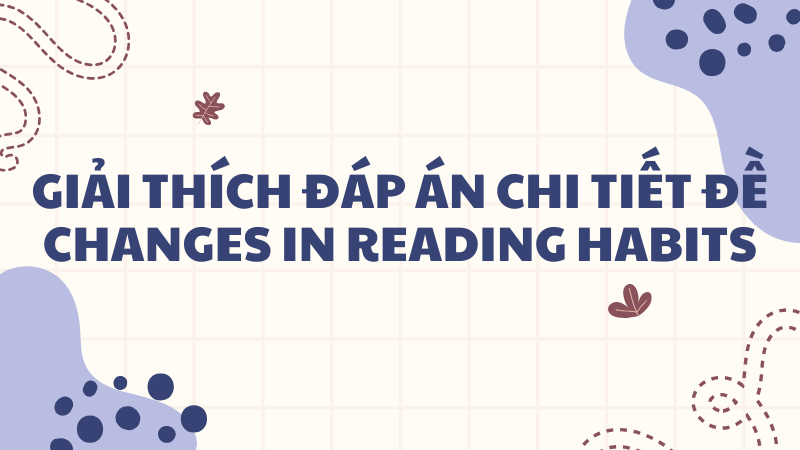
Questions 18 – 22
Question 18
Đáp án: D
Dạng câu hỏi: Summary Completion
Vị trí đáp án: Paragraph 6
Giải thích: Trong đoạn 6, dòng 1-2 nêu: “Multiple studies show that digital screen use may be causing a variety of troubling downstream effects on reading comprehension in older high school and college students…” Trong đoạn trích này, “Nhiều nghiên cứu” đề cập đến nhiều nghiên cứu và “những tác động hạ nguồn đáng lo ngại” chỉ ra xu hướng đáng lo ngại. Do đó, câu trả lời là D: worrying.
Question 19
Đáp án: H
Dạng câu hỏi: Summary Completion
Vị trí đáp án: Paragraph 6
Giải thích: Ở đoạn 6, dòng 3-6, tác giả giải thích: “… Tại Stavanger, Na Uy, nhà tâm lý học Anne Mangen và các đồng nghiệp của bà đã nghiên cứu cách học sinh trung học hiểu cùng một tài liệu trong các phương tiện khác nhau. Nhóm của Mangen đã hỏi các đối tượng những câu hỏi về một truyện ngắn có cốt truyện hấp dẫn toàn thể học sinh; một nửa số học sinh đọc truyện trên máy tính bảng, một nửa còn lại đọc sách bìa mềm…” Trong đoạn trích này, “cách học sinh trung học hiểu” đề cập đến mức độ hiểu sâu sắc của mỗi nhóm về cốt truyện. “Một nửa số học sinh đọc truyện trên máy tính bảng” có nghĩa là một nửa sử dụng phương tiện kỹ thuật số và “một nửa còn lại đọc sách bìa mềm” có nghĩa là một nửa còn lại sử dụng bản in. “Hỏi các đối tượng những câu hỏi” đề cập đến việc sử dụng kỹ thuật hỏi-và-trả lời. Do đó, câu trả lời là H: thorough.
Question 20
Đáp án: F
Dạng câu hỏi: Summary Completion
Vị trí đáp án: Paragraph 6
Giải thích: Câu trả lời nằm ở đoạn 6, dòng 6-8: “…Kết quả cho thấy những học sinh đọc trên bản in có khả năng hiểu tốt hơn những bạn đọc trên màn hình, đặc biệt là khả năng sắp xếp chi tiết và tái tạo cốt truyện theo trình tự thời gian.” Trong đoạn trích này, “những học sinh đọc trên bản in có khả năng hiểu tốt hơn những bạn đọc trên màn hình” có nghĩa là những bạn đọc trên màn hình thấy khó nhớ lại thứ tự thông tin. Do đó, câu trả lời là F: hard.
Question 21
Đáp án: B
Dạng câu hỏi: Summary Completion
Vị trí đáp án: Paragraph 7
Giải thích: Trong đoạn 7, dòng 1-5 nêu: “Ziming Liu từ Đại học bang San Jose đã tiến hành một loạt các nghiên cứu chỉ ra rằng ‘chuẩn mực mới’ trong việc đọc là lướt qua, bao gồm việc phát hiện từ và duyệt qua văn bản. Nhiều người đọc hiện sử dụng một mô hình khi đọc trong đó họ lấy mẫu dòng đầu tiên và sau đó phát hiện từ trong phần còn lại của văn bản. Khi bộ não đọc lướt qua như thế này, nó sẽ giảm thời gian dành cho các quá trình đọc sâu…” Trong đoạn trích này, “phát hiện từ trong phần còn lại của văn bản” có nghĩa là đọc các từ và cụm từ riêng lẻ và “nó làm giảm thời gian” ám chỉ việc tiết kiệm thời gian. Do đó, câu trả lời là B: isolated.
Question 22
Đáp án: C
Dạng câu hỏi: Summary Completion
Vị trí đáp án: Paragraph 7
Giải thích: Trong đoạn 7, dòng 5-6 nêu: “…Nói cách khác, chúng ta không có thời gian để nắm bắt sự phức tạp, để hiểu cảm xúc của người khác, để cảm nhận cái đẹp và để tạo ra suy nghĩ của riêng người đọc.” Trong đoạn trích này, “chúng ta không có thời gian để nắm bắt sự phức tạp” ám chỉ sự hiểu biết hời hợt, và “hiểu cảm xúc của người khác” có nghĩa là hiểu nội dung cảm xúc của tài liệu. Do đó, câu trả lời là C: emotional.
Questions 23 – 26
Question 23
Đáp án: Yes
Dạng câu hỏi: True/ False/ Not Given
Vị trí đáp án: Paragraph 8
Giải thích: Trong đoạn 8, dòng 3-4 nêu: “…Câu hỏi nói về cách tất cả chúng ta bắt đầu đọc trên nhiều phương tiện khác nhau và cách điều đó thay đổi không chỉ những gì chúng ta đọc mà còn cả mục đích chúng ta đọc…” Trong đoạn trích này, “cách điều đó thay đổi không chỉ những gì chúng ta đọc” có nghĩa là phương tiện chúng ta sử dụng để đọc có thể ảnh hưởng đến lựa chọn nội dung đọc của chúng ta. Do đó, câu trả lời là YES.
Question 24
Đáp án: No
Dạng câu hỏi: Yes/ No/ Not Given
Vị trí đáp án: Paragraph 9
Giải thích: Dòng đầu tiên của đoạn 9 đưa ra câu trả lời: “Có một quy tắc cũ trong khoa học thần kinh không thay đổi theo tuổi tác: sử dụng nó hoặc mất nó…” Trong đoạn trích này, “không thay đổi theo tuổi tác” có nghĩa là nó như nhau đối với tất cả các nhóm tuổi và “sử dụng nó hoặc mất nó” đề cập đến việc sử dụng các kỹ năng đọc hoặc mất chúng. Do đó, câu trả lời là NO.
Question 25
Đáp án: Not Given
Dạng câu hỏi: Yes/ No/ Not Given
Giải thích: Đoạn cuối không cung cấp bất kỳ thông tin nào về việc thông tin sai lệch có trở nên phổ biến hơn hay ít hơn trong kỷ nguyên số ngày nay hay không. Do đó, câu trả lời là NOT GIVEN.
Question 26
Đáp án: Yes
Dạng câu hỏi: Yes/ No/ Not Given
Giải thích: Ở dòng 3-4 của đoạn cuối, tác giả nêu: “…Câu chuyện về bộ não đọc thay đổi vẫn chưa kết thúc. Chúng ta sở hữu cả khoa học và công nghệ để xác định và giải quyết lại những thay đổi trong cách chúng ta đọc trước khi chúng trở nên cố hữu…” Trong đoạn trích này, “vẫn chưa kết thúc” có nghĩa là vẫn còn cơ hội, và “giải quyết lại những thay đổi” ám chỉ việc khắc phục các vấn đề. Do đó, câu trả lời là YES.
Trên đây là bài mẫu gợi ý cho đề Changes in reading habits Đề CAM 16 Test 4 Reading Passage 2 được đội ngũ chuyên môn tại Edmicro biên soạn. Hy vọng bài viết trên sẽ giúp ích cho các bạn trong quá trình Edmicro IELTS tại nhà.
Xem thêm:

